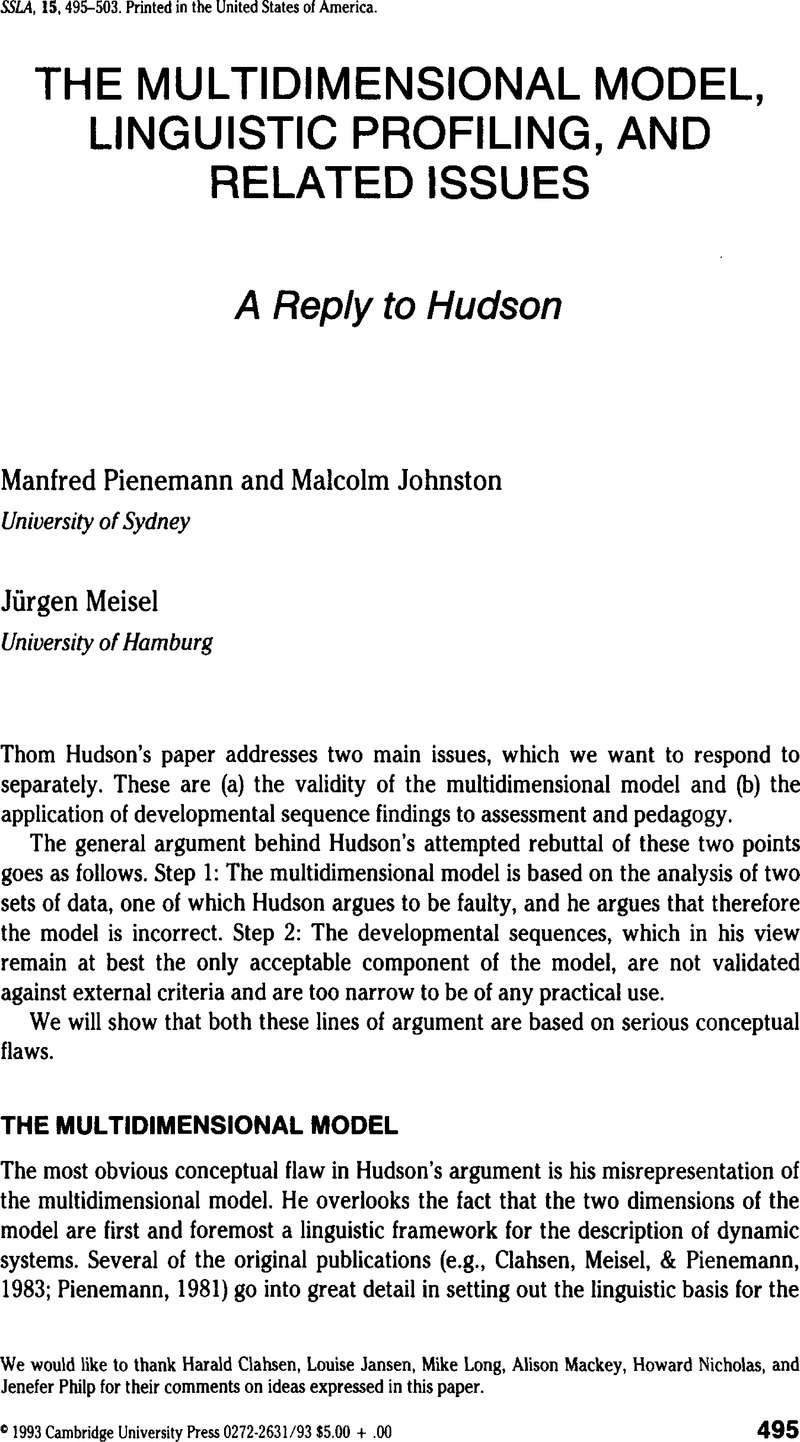Crossref Citations
This article has been cited by the following publications. This list is generated based on data provided by Crossref.
Mellow, J. Dean
1996.
On the primacy of theory in applied studies: a critique of Pienemann and Johnston (1987).
Second Language Research,
Vol. 12,
Issue. 3,
p.
304.
Pienemann, Manfred
and
Johnston, Malcolm
1996.
A brief history of processing approaches to SLA: reply to Mellow.
Second Language Research,
Vol. 12,
Issue. 3,
p.
319.
Shirai, Yasuhiro
1997.
Encyclopedia of Language and Education.
p.
1.
Salaberry, Rafael
2000.
Revising the revised format of the ACTFL Oral Proficiency Interview.
Language Testing,
Vol. 17,
Issue. 3,
p.
289.
Sharma, Devyani
2005.
LANGUAGE TRANSFER AND DISCOURSE UNIVERSALS IN INDIAN ENGLISH ARTICLE USE.
Studies in Second Language Acquisition,
Vol. 27,
Issue. 04,
2017.
Understanding Second Language Processing.
Vol. 4,
Issue. ,


